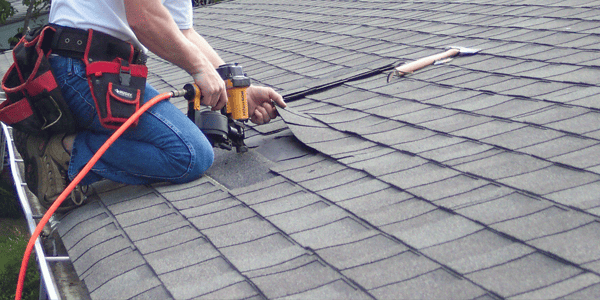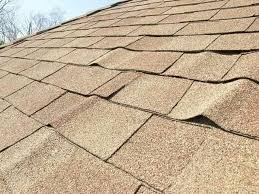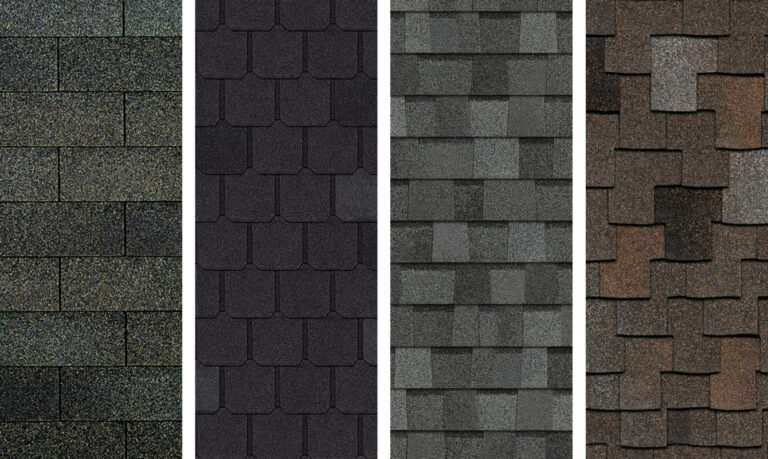Roof sheathing, also known as roof decking, is essentially the foundation of your roof. It’s also one of the most overlooked components by homeowners — and that’s probably because it lives unseen underneath your asphalt shingles. However, when it comes time to get a new roof installed, you’ll likely have to decide what type of roof sheathing will work best for your home.
Ultimately, the goal is to ensure that the roof over your head is strong and long-lasting. That’s why we’re going to walk you through the top five roof sheathing options.
What Is Roof Sheathing?
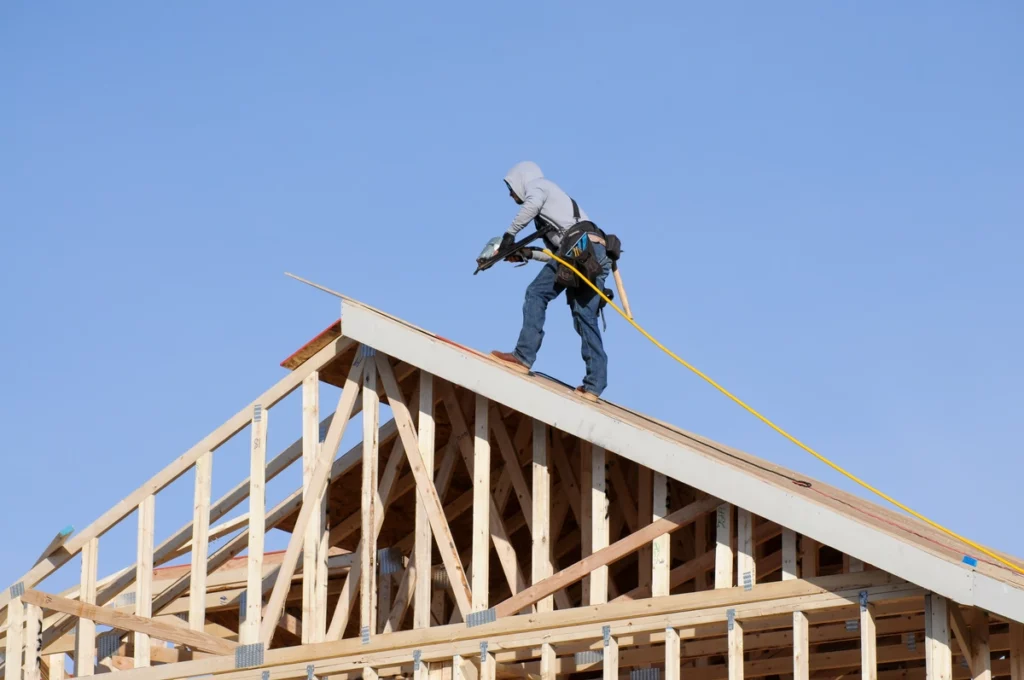
Roof sheathing (or roof decking) is the layer of wooden boards that make up the frame of your roofing system. It’s what your asphalt shingles and other roofing components are installed directly on top of.
More importantly, it works to distribute weight evenly across your roof so that heavy loads of precipitation don’t lead to sagging or bowing. Aside from being your roof’s support system, it also contributes to:
- Moisture seepage
- Leak prevention
- Fire prevention
- Temperature control
- Overall protection of your home’s structure and interior
Without roof sheathing, your entire home would be vulnerable to the elements and more.
The 5 Types of Roof Sheathing
Roof sheathing can be made from several different materials, including plywood, OSB, concrete, and wood panels. Each roofing foundation will differ based on the material, and these are your best (and most common) options:
1. Oriented Strand Board (OSB) Sheathing
OSB is a synthetic material made from various fragments of wood bonded together using special adhesives. OSB has a uniform finish and is thick, and offers up the following benefits:
- It’s more affordable compared to other options
- It’s less prone to warping and swelling
- It’s long-lasting
However, OSB sheathing is more vulnerable to water damage, and it’s associated with containing formaldehyde.
2. Plywood Sheathing
Plywood is similar to OSB in that it’s made from several wooden layers bonded by adhesive. It’s also one of the most popular choices due to its high density and layers.
The benefits of plywood sheathing boards include:
- A dense and thick board that’s perfect for nailing purposes
- It’s resistant to shrinking and warping
- Its high density prevents moisture from seeping into its core layers
However, plywood is a much more expensive and high-maintenance option.
3. Concrete Sheathing
Concrete sheathing is typically used when there’s a need for high strength and support. It’s manufactured by pouring concrete into prefabricated boards, and it’s becoming the more popular choice among green projects as it replaces the need for wood.
The benefits of concrete roof sheathing include:
- It offers ultimate fire resistance
- It’s incredibly strong and resistant to lateral wind loads
- It’s completely resistant to moisture rot and insect activity
- It’s low-maintenance and long-lasting
Of course, concrete comes with a hefty price tag as it requires more manpower to deliver and install.
4. Skip Roof Sheathing
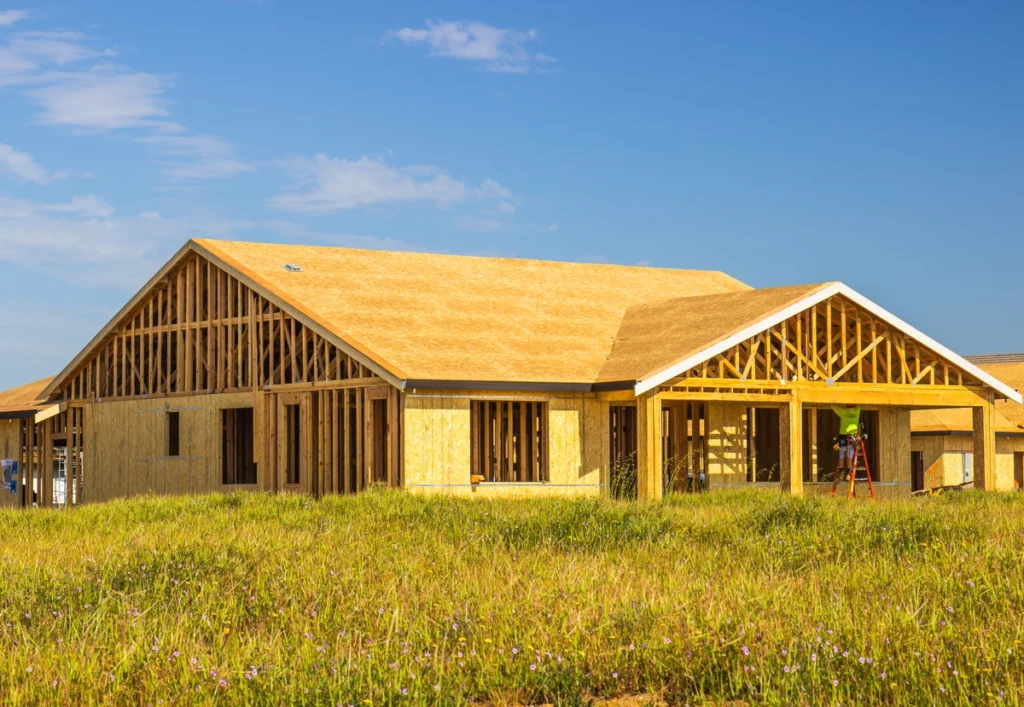
Skip sheathing is a type of roof decking in which wooden planks are installed with specific spacing between them. This allows air to pass through the sheathing more easily to assist in drying the entire roof system as it’s exposed to moisture.
Plywood and OSB are typically used in skip sheathing, and it comes with the following benefits:
- It’s moisture resistant
- It’s durable
- Material costs are less compared to others
However, skip sheathing’s greatest caveat is that it’s only durable in mild climates. It tends to be ineffective in areas that consistently see heavy rainfall. Installation is also more expensive.
5. Wooden Boards Roof Sheathing
Wooden boards are considered the traditional type of roof sheathing as they were first used in the early 20th century. They were also originally made from the bark of local woods and cut into the appropriate shape. They were also typically adorned with wooden shakes and shingles.
Wooden boards aren’t used as much today as they don’t carry asphalt shingles well. Therefore plywood and OSB sheathing have mostly taken its place, but they still come with the following benefits for the homes that still use them:
- They’re robust, making for a strong foundation
- They provide excellent insulation
- They’re sturdy in high winds
However, wooden board sheathing is difficult to install and, therefore, expensive. It’s also susceptible to warping over time.
Connect With North Carolina’s Roofing Experts
Roof sheathing materials are just one of the many choices you’ll need to make when the time comes for a roof replacement. The expert roofers at Tidds Roofing can walk you through all of the details and help you choose what’s best for your home and budget. Give us a call today to schedule your free roof inspection and to learn more about your options!
